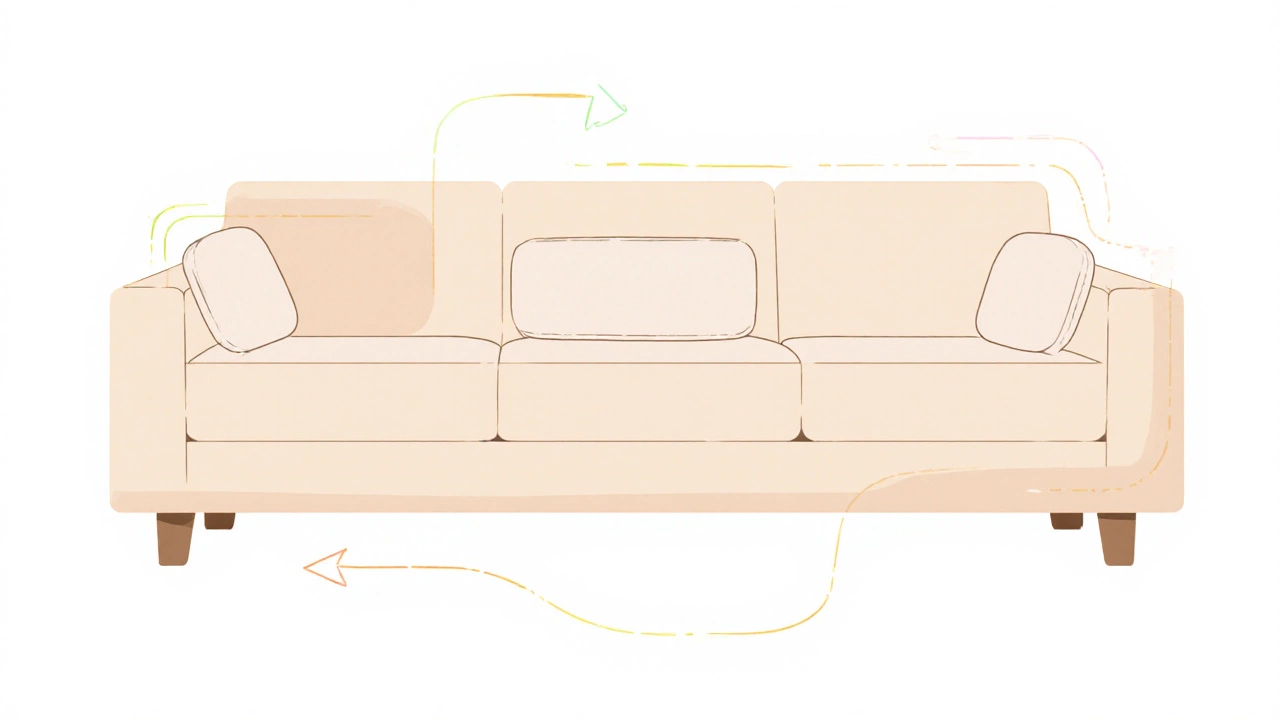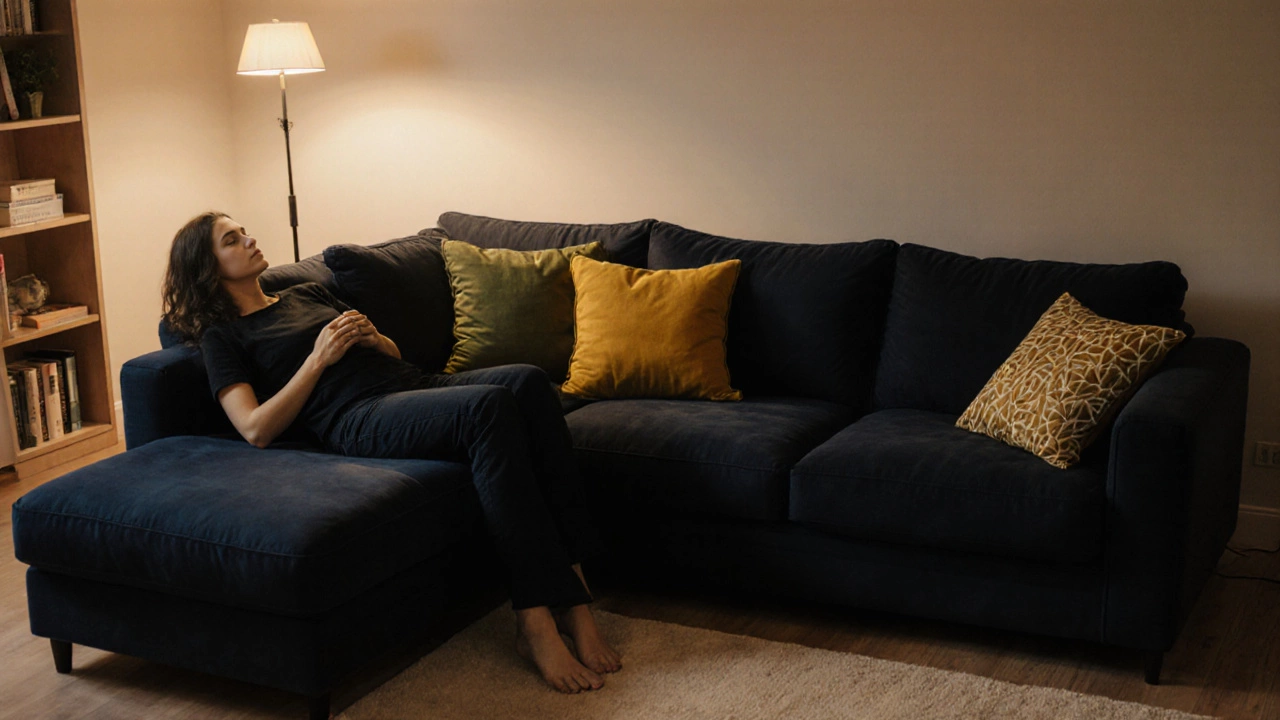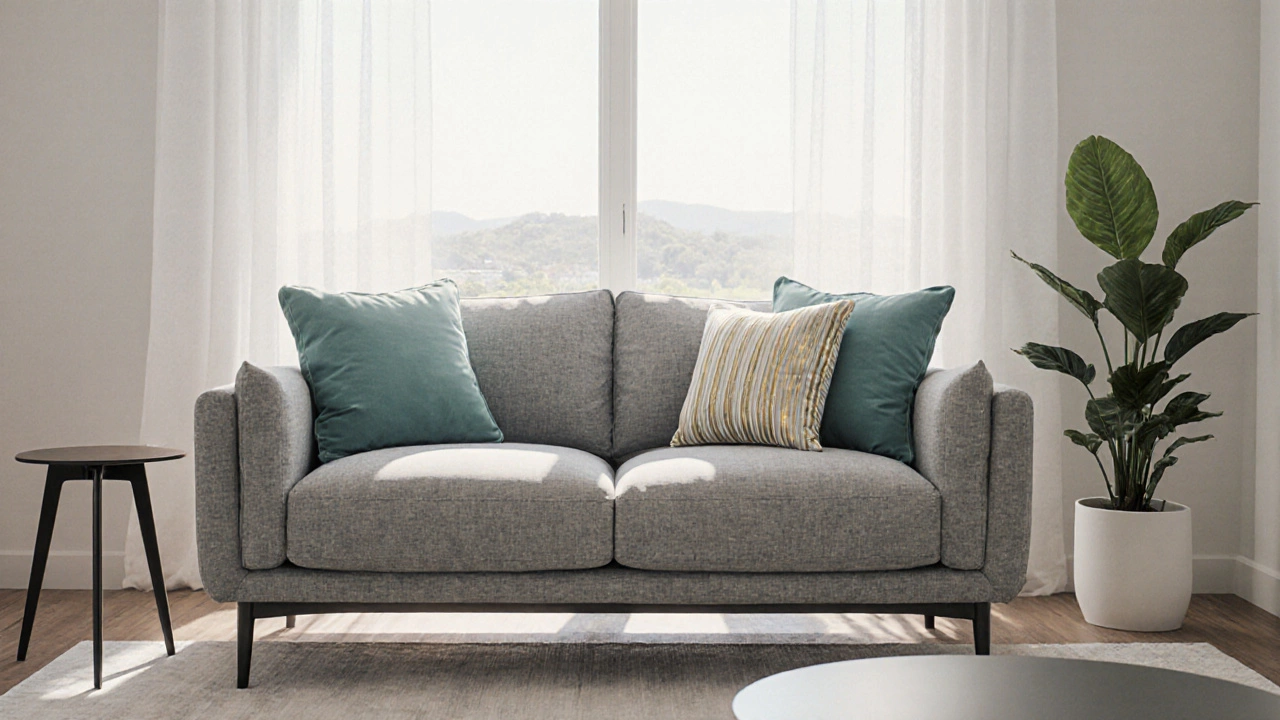Cushion Count Calculator
Find Your Perfect Cushion Balance
Calculate the ideal number of cushions based on your sofa type and dimensions
Your Recommendation
Cushions are the unsung heroes of sofa styling. They add texture, color, and comfort, but they can also tip a well‑balanced living room into visual chaos if you go overboard. Below, we unpack the factors that decide the sweet spot for cushions on a sofa and give you a step‑by‑step plan to get the look right without feeling stuffed.
Quick Takeaways
- Most sofas look best with 2‑4 cushions on a two‑seater, 3‑6 on a three‑seater, and 4‑8 on a sectional.
- Match cushion size to sofa depth; deeper sofas need larger cushions to keep proportions.
- Stick to a unified colour palette - use pattern sparingly for visual harmony.
- Consider ergonomics: too many cushions can reduce seating comfort and support.
- Rotate cushions regularly to keep wear even and preserve shape.
Why Cushion Count Matters
When you pile on cushions, you’re not just adding fluff; you’re shaping the viewer’s eye. A sofa overloaded with pillows can look cramped, making the room feel smaller. Conversely, a bare sofa appears stark and under‑decorated. The key is proportion: the number, size, and placement of cushions should echo the sofa’s dimensions and the room’s overall scale.
Factors That Influence the Ideal Number
1. Sofa Size and Shape
Measure the seating depth (the distance from the backrest to the front edge) and the width. As a rule of thumb:
- Depth < 20in: use 1‑2 small cushions (12‑14in square).
- Depth 20‑30in: 2‑3 medium cushions (14‑18in square) work well.
- Depth > 30in: go for 3‑4 larger cushions (18‑22in square) to fill the space.
Sectional sofas often have multiple seating zones; treat each zone as its own mini sofa when counting.
2. Cushion Material
Different fills affect how many you can comfortably stack. Feather‑filled cushions are plush but flatten quickly, so fewer are better to maintain support. Foam or hybrid fills retain shape longer, allowing a bit more layering without sacrificing firmness.
3. Colour and Pattern
Too many patterned cushions compete with each other. Choose one or two patterned pieces and let the rest be solid colours that echo the sofa fabric or wall paint. This creates visual cohesion while still offering interest.
4. Ergonomics
Every extra cushion reduces the depth of the seat. If you sit down and feel like you’re sinking too deeply, you’ve likely crossed the comfort line. Aim for a seat depth of 10‑12in after cushions are in place - that’s where most people feel supported.
5. Lifestyle and Usage
Family homes with kids often benefit from fewer cushions (easier to clean) while a formal entertaining space can afford a few extra decorative pillows to impress guests.

Visual Balance: The 60‑30‑10 Rule
Borrowed from interior design, the 60‑30‑10 rule helps you allocate visual weight:
- 60% - The sofa’s base colour or fabric.
- 30% - Solid‑colour cushions that reinforce the main hue.
- 10% - One or two patterned or textured cushions for a pop.
Apply this ratio when selecting cushion sizes and numbers; it naturally prevents over‑crowding.
Practical Steps to Arrange Cushions
- Start with the largest pieces. Place a square or rectangular cushion at each corner of the sofa seat.
- Add medium‑size cushions. For a three‑seater, a single central cushion works; for a sectional, add one per seating zone.
- Finish with accent pillows. These are smaller (10‑12in) and can be tilted or laid flat for texture.
- Step back and assess. From a standing position, the arrangement should feel balanced, not lopsided.
- Adjust for comfort. Sit down; if the seat feels too shallow, remove or replace a cushion with a thinner one.
Common Pitfalls and How to Avoid Them
Living room owners often make these mistakes:
- Too many small cushions. They create visual clutter without adding comfort.
- Mixing too many patterns. Competes for attention; stick to one pattern family.
- Ignoring ergonomics. Over‑stuffed seats cause back pain and make the sofa look squashed.
- Forgetting maintenance. Cushions collect dust; schedule a quick vacuum and rotate weekly.

Maintenance, Storage, and Longevity
Even the best‑looking cushion arrangement falls apart without proper care. Follow these tips:
- Rotate weekly. Flip and turn cushions to distribute wear evenly.
- Spot‑clean spills. Blot, don’t rub; use mild detergent if needed.
- Store seasonal cushions. When not in use, keep them in a breathable storage bag to avoid mould.
- Refresh fills. Foam loses resilience after 2‑3 years - consider re‑foaming to keep support.
Recommendation Table: Cushion Count by Sofa Type
| Sofa Style | Typical Width (in) | Suggested Cushion Count | Key Tip |
|---|---|---|---|
| Two‑seater | 48‑60 | 2‑4 | Use one large corner cushion plus one central. |
| Three‑seater | 72‑84 | 3‑6 | Two corner cushions, one‑two middle pieces. |
| Sectional (L‑shape) | 120‑150 total | 4‑8 | Treat each seating wing separately. |
| Chaise lounge | 72‑90 | 1‑2 | One large back cushion works best. |
| Sleeper sofa | 70‑90 | 2‑5 | Prioritise comfort over décor; limit decorative pillows. |
Frequently Asked Questions
How many cushions should I use on a small apartment sofa?
For a compact sofa under 48in wide, stick to 1‑2 medium cushions. This keeps the space open and avoids a cramped look.
Can I mix different cushion sizes?
Yes, mixing sizes adds depth. A common trick is two large corner cushions, a medium central piece, and a small accent pillow.
Do patterned cushions ever look too busy?
If you use more than one patterned cushion, keep the colour palette limited to two tones. Otherwise, the eye gets overwhelmed.
Should I consider the sofa’s backrest when choosing cushions?
Absolutely. A backrest that’s too low may need a taller cushion for visual balance, while a high back can accommodate shorter cushions.
How often should I replace sofa cushions?
Foam cushions typically last 2‑3years before they lose bounce. Feather or down fills may need replacement sooner, especially if they’re heavily used.
Next Steps
Ready to give your sofa a fresh look? Follow this simple checklist:
- Measure your sofa’s depth and width.
- Choose cushion sizes that fit the proportions.
- Select a colour scheme using the 60‑30‑10 rule.
- Arrange cushions following the corner‑central‑accent order.
- Sit down, adjust for comfort, and enjoy the new vibe.
Remember, the goal isn’t to fill every nook but to create a balanced, inviting seat that feels as good as it looks.
